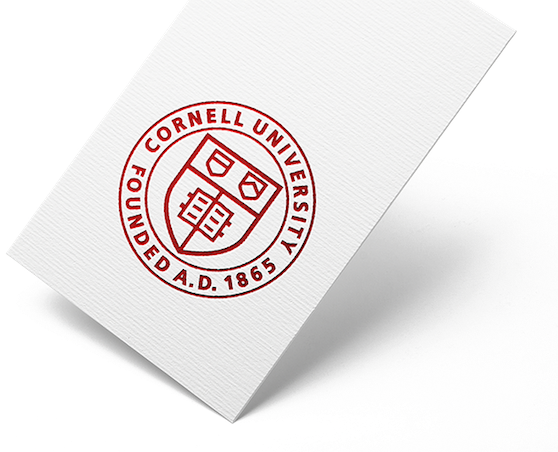Wendy Ju is an associate professor at the Jacobs Technion-Cornell Institute at Cornell Tech and in the information science field at Cornell University. She is also on the faculty at Technion – Israel Institute of Technology. Dr. Ju comes to Cornell Tech from the Center for Design Research at Stanford University, where she was Executive Director of Interaction Design Research, and from the California College of the Arts, where she was an Associate Professor of Interaction Design in the Design MFA program. Her work in the areas of human-robot interaction and automated vehicle interfaces highlights the ways that interactive devices can communicate and engage people without interrupting or intruding. Dr. Ju has innovated numerous methods for early-stage prototyping of automated systems to understand how people will respond to systems before the systems are built. She has a Ph.D. in Mechanical Engineering from Stanford and a Master’s in Media Arts and Sciences from MIT. Her monograph on “The Design of Implicit Interactions” was published in 2015.

Interactive Device DesignCornell Certificate Program
Request More Info
Overview and Courses
Have you ever had a great idea for an interactive product but you didn’t know how to build it? If you have some programming knowledge and a desire to build devices, this hands-on certificate program will give you the applied foundation you need to take the next step.
Throughout this program, you will engage in several project builds using both Arduino and Raspberry Pi. After being guided through the foundations of electronics and computing to develop simple devices that respond to user input, you’ll progress to creating complete devices that have complex functions, including networked communications that connect one device to another. As you build these interactive devices, you will also gain an understanding of how human users and devices can exchange information in a smooth, natural way. Whether you’re involved in engineering, robotics, computer science, or product development, you’ll come away from this program prepared to design more effective and sophisticated interaction between products and end users.
This program leverages open-source libraries and requires the purchase of a kit of electronic components and microcontrollers at a cost of around $600. Once you enroll in the program, you will be sent an email that provides the specific details on where to purchase the kit. To be successful in the courses, you should have familiarity with programming, be technically savvy, and have an understanding of key computer science principles.
To avoid delays in starting your first course, please register at least two weeks before your intended start date and provide a valid shipping address during registration. This will ensure the timely delivery of your kit and a smooth start to your learning experience. While course and certificate fees are refundable, the kit fee is not refundable once shipped.
The courses in this certificate program are required to be completed in the order that they appear.
Course list
Interactivity, by definition, is reciprocal activity, as interactive devices are designed to enable input and response between a user and a system. This course gives you firsthand experience with the basic building blocks that make up interactive devices. You will begin by walking through a course kit and identifying the function of each component. You will then explore step-by-step methodologies for analyzing circuit diagrams, physically assembling circuits, and programming interaction.
Through activities, you will practice analyzing circuits, assembling electronic circuits, and writing code, acquiring tools and best practices along the way. By the end of this course, you will have the necessary foundation to build and program the electronic circuits critical to interactive devices.
This program requires the purchase of a kit of electronic components and microcontrollers at a cost of around $600.
- Apr 8, 2026
- Jul 1, 2026
- Sep 23, 2026
- Dec 16, 2026
In this course you will integrate external components into Arduino circuits. You will start by physically connecting components to the microcontroller, and then move on to the business of sorting out the code needed to make the microcontroller and the external components such as LEDs and sensors communicate in a fluid way. This will introduce you to libraries and sample code, and you will have the opportunity to expand your coding skills by adapting existing code written by others.
Activities in this course are focused on creating hardware-software interfaces that allow the microcontroller to utilize external input and output components in interactive devices.
The practical work culminates in a final project in which you will write a program that uses the Arduino to monitor a sensor input and control an output, with your choice of sensor and output components.
This program requires the purchase of a kit of electronic components and microcontrollers at a cost of around $600.
You are required to have completed the following course or have equivalent experience before taking this course:
- Designing a Simple Interactive System
- Apr 22, 2026
- Jul 15, 2026
- Oct 7, 2026
- Dec 30, 2026
In this course you will explore how to use complex sensing and display components with your microcontroller board. You will continue to become acquainted with some of the exciting sensors and other components available to you when you want to design a new system.
Another main theme in this course is designing interactive behaviors using state diagrams. Behind every great user interface, there is a well-conceived and well-implemented diagram that describes what states the system gets into and how the system transitions from one state to another as the user interacts with the device.
In the course project, you will explore a variety of sensors and a graphical display. Hand in hand with this, you will develop greater fluency in the use of software- and hardware-based modules, which will enable you to approach new components that come onto the market and understand how to use them and their associated software.
This program requires the purchase of a kit of electronic components and microcontrollers at a cost of around $600.
You are required to have completed the following courses or have equivalent experience before taking this course:
- Designing a Simple Interactive System
- Expanding Interactive Systems With Devices and Libraries
- May 6, 2026
- Jul 29, 2026
- Oct 21, 2026
In this course you will go beyond output devices that simply display information to output devices that involve physical movement. Actuators are the components of interactive devices that act on the world. You will learn about servo motors and other actuators that can be incorporated into your interactive devices.
Some actuators, such as motors, can draw heavy currents at times. In order to use these actuators you will need to work out the power requirements for your device. In this course you will learn some of the basics of battery selection and power management.
There are a number of practical activities involving the Arduino and various external components, and during these practical sessions you will deepen your prototyping and debugging skills. These activities lead up to the final project, in which you will design and build a physical interactive device of your own choosing.
This program requires the purchase of a kit of electronic components and microcontrollers at a cost of around $600.
You are required to have completed the following courses or have equivalent experience before taking this course:
- Designing a Simple Interactive System
- Expanding Interactive Systems With Devices and Libraries
- Designing Complex Sensing and Functions in Interactive Systems
- May 20, 2026
- Aug 12, 2026
- Nov 4, 2026
In this course you will start to use the Raspberry Pi for the first time. The Raspberry Pi is like a small version of a regular computer except that you can choose all the components that you want to use with it. You can connect your self-built circuits to it in much the same way that you do with the Arduino.
In this course you will learn how it is possible to add other devices such as microphones, speakers, displays to the Raspberry Pi. When adding external devices, it is important to find and incorporate the associated software to drive them, so you will learn how to do this through a series of practical exercises. In the project you will design your own interactive device using both the Raspberry Pi and the Arduino.
This program requires the purchase of a kit of electronic components and microcontrollers at a cost of around $600.
You are required to have completed the following courses or have equivalent experience before taking this course:
- Designing a Simple Interactive System
- Expanding Interactive Systems With Devices and Libraries
- Designing Complex Sensing and Functions in Interactive Systems
- Building Actuated Interactive Devices
- Jun 3, 2026
- Aug 26, 2026
- Nov 18, 2026
In this course you will develop an interactive Raspberry Pi device that communicates with other devices across the internet, and uses cutting edge technology like speech synthesis and computer vision. For the final project of this course you will build a system of your own design that uses these new technologies.
The course brings into play all the skills you have learned in previous courses. It allows you to gain experience with the complex process of designing, prototyping, and debugging a system with distributed, networked components. You will experience firsthand the challenges of developing a device from a concept to a fully functional prototype that has the internet connectivity that is expected of marketable Internet of Things devices today.
This program requires the purchase of a kit of electronic components and microcontrollers at a cost of around $600.
You are required to have completed the following courses or have equivalent experience before taking this course:
- Designing a Simple Interactive System
- Expanding Interactive Systems With Devices and Libraries
- Designing Complex Sensing and Functions in Interactive Systems
- Building Actuated Interactive Devices
- Designing Advanced Interactive Devices
- Jun 17, 2026
- Sep 9, 2026
- Dec 2, 2026
Request more Info by completing the form below.
How It Works
- View slide #1
- View slide #2
- View slide #3
- View slide #4
- View slide #5
- View slide #6
- View slide #7
- View slide #8
- View slide #9
Faculty Author
Key Course Takeaways
- Design, build, and debug a responsive device using a microcontroller-based electronic circuit that senses, computes, and displays
- Incorporate light, sound, and character displays into an interactive device
- Build interactive systems with an emphasis on novel inputs and data storage
- Prototype a standalone interactive device using motors that can be deployed in the physical world
- Expand input, computation, and output capabilities of an interactive device using Raspberry Pi
- Design a complex, networked interactive system with rich sensing capabilities

Download a Brochure
Not ready to enroll but want to learn more? Download the certificate brochure to review program details.

What You'll Earn
- Interactive Device Design Certificate from Cornell Tech
- 60 Professional Development Hours (6 CEUs)
Watch the Video
Who Should Enroll
- Engineers
- Research and design professionals
- Product designers and developers
- Software engineers
- Electronics hobbyists
- Designers/artists with the appropriate background
- Entrepreneurs
- Career starters
Explore Related Programs
Request Information Now by completing the form below.

Interactive Device Design
| Select Payment Method | Cost |
|---|---|
| $3,000 | |






































